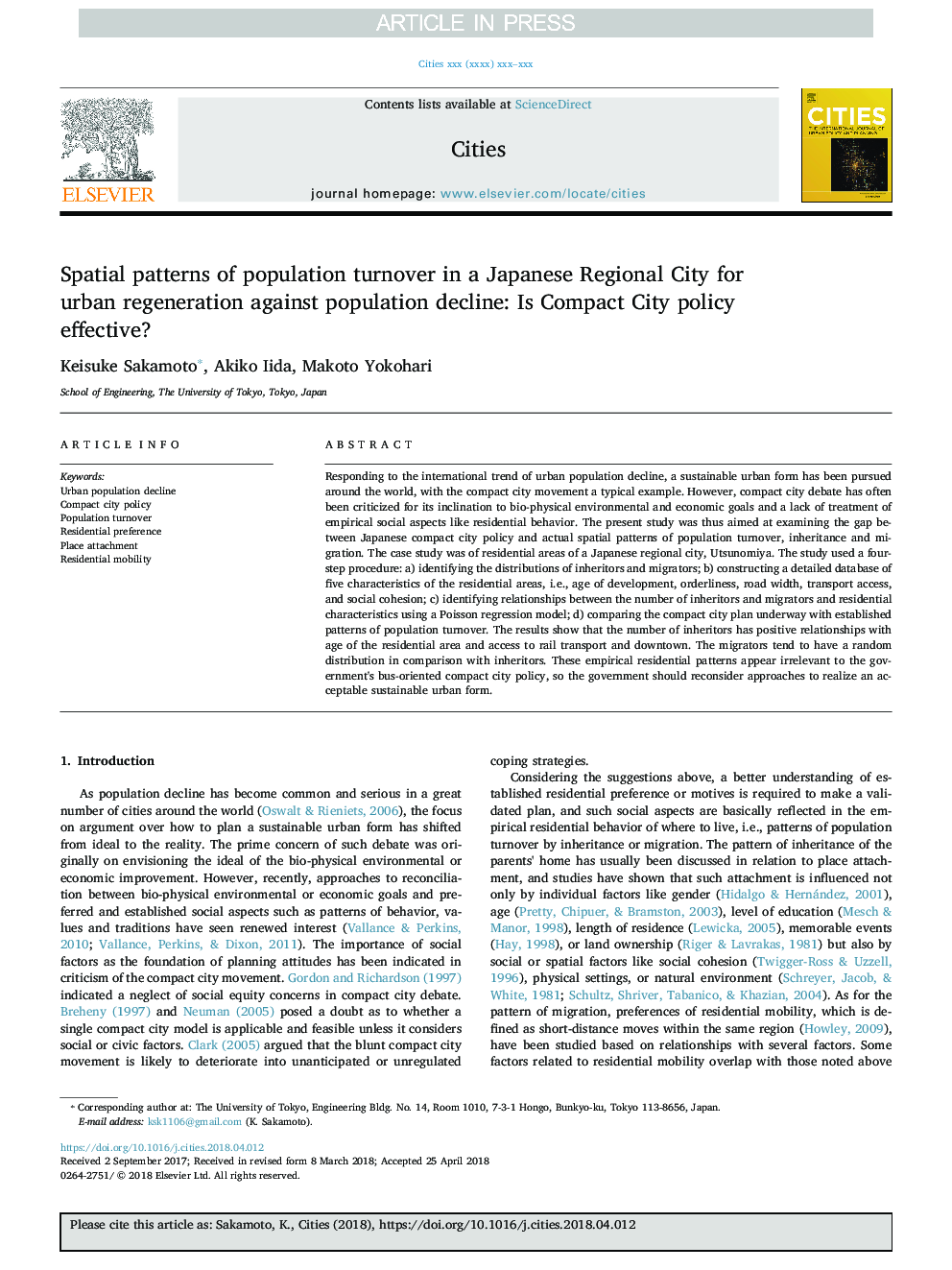| Article ID | Journal | Published Year | Pages | File Type |
|---|---|---|---|---|
| 8954671 | Cities | 2018 | 12 Pages |
Abstract
Responding to the international trend of urban population decline, a sustainable urban form has been pursued around the world, with the compact city movement a typical example. However, compact city debate has often been criticized for its inclination to bio-physical environmental and economic goals and a lack of treatment of empirical social aspects like residential behavior. The present study was thus aimed at examining the gap between Japanese compact city policy and actual spatial patterns of population turnover, inheritance and migration. The case study was of residential areas of a Japanese regional city, Utsunomiya. The study used a four-step procedure: a) identifying the distributions of inheritors and migrators; b) constructing a detailed database of five characteristics of the residential areas, i.e., age of development, orderliness, road width, transport access, and social cohesion; c) identifying relationships between the number of inheritors and migrators and residential characteristics using a Poisson regression model; d) comparing the compact city plan underway with established patterns of population turnover. The results show that the number of inheritors has positive relationships with age of the residential area and access to rail transport and downtown. The migrators tend to have a random distribution in comparison with inheritors. These empirical residential patterns appear irrelevant to the government's bus-oriented compact city policy, so the government should reconsider approaches to realize an acceptable sustainable urban form.
Related Topics
Social Sciences and Humanities
Business, Management and Accounting
Tourism, Leisure and Hospitality Management
Authors
Keisuke Sakamoto, Akiko Iida, Makoto Yokohari,
